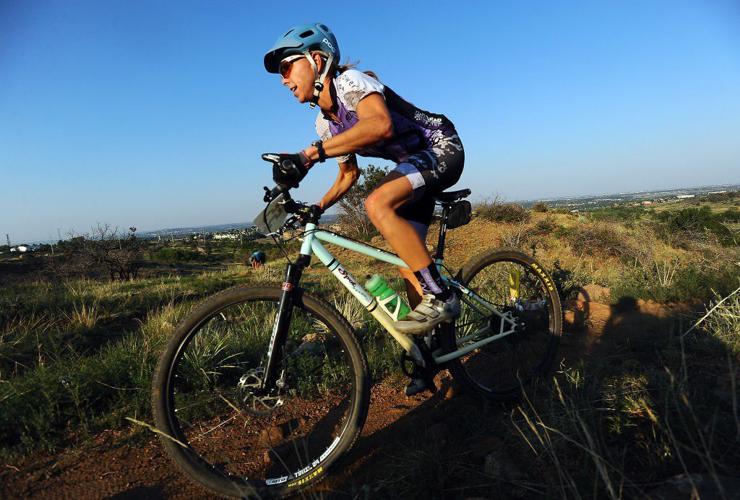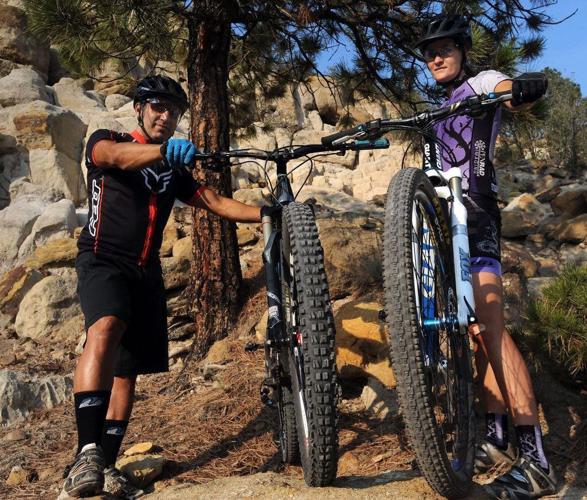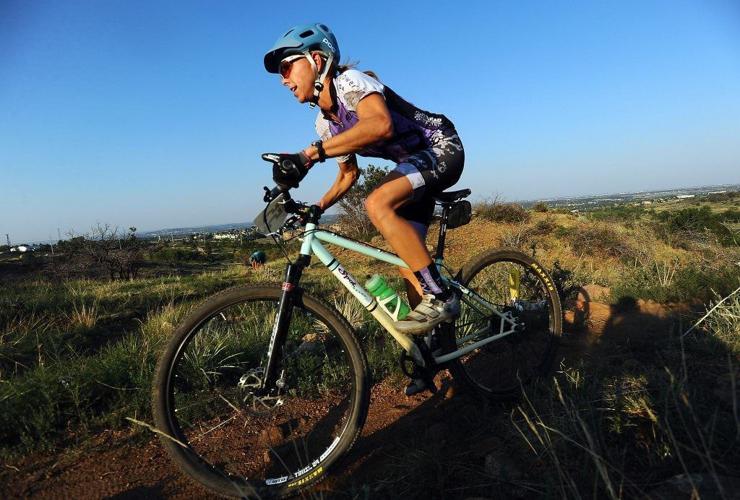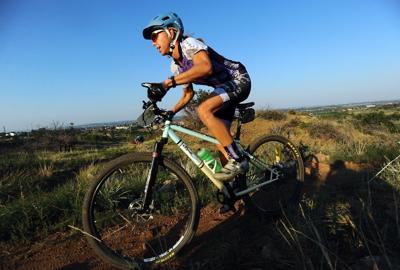Choosing a mountain bike (mtb) is akin to buying a car – there’s a seemingly endless number of models, each with specialty features.
Before shopping, think about where you’ll be riding and how much you want to spend.
If you’re riding Forest Service roads or relatively flat dirt trails, you can get away with a hardtail and probably spend no more than $800. If you plan to bomb down singletrack with large drops and rock gardens, you’ll probably want a full-suspension bike and you’ll likely spend at least $1,500.
You can buy a mountain bike (mtb) for $500 or you can spend $10,000. If you’re on a budget, you might look for last year’s model from a major manufacturer. Expect to pay at least $1,000 for a close-out model bike purchased at a shop. If you buy secondhand, take a close look at the condition of the bike’s components; no one enjoys expensive surprises and you certainly don’t want something to break, leaving you stuck on a trail.
Most riders in Colorado will want an all-mountain bike for use on local trails and the occasional downhill. If most of your riding is lift-served (you’re riding a ski lift up the mountains to bomb down trails), focus on downhill models.
Arrange to try out a selection of bikes on local trails. You might look up when manufacturers or bike shops are holding “demo days” where you can try out various models. Most shops will allow you to ride around on nearby trails, at minimum.
Hardtail or full suspension?
Hardtail bikes have a suspension fork attached to the front wheel. This reduces hand and arm fatigue, and improves steering and control. This is your bike if: you’re looking for an affordable first bike, you want one overall bike for all of your rides, you plan to ride moderate trails.
Full suspension bikes have a suspension fork in front and a rear shock absorber. The bikes are more expensive and generally weigh more than a hardtail bike, but reduce fatigue on the rider and offer better all-around bike control. This is your bike if: you’re going to focus on the dirt, you want to tackle difficult terrain, or you want to reduce impact on your joints and muscles.

Jeff Hienton, left, holds a 26-inch mtb while his wife, Hillary Hienton, holds a 29-inch mountain bike. Photo Credit: Christian Murdock
MTB Wheel size
Increasingly, riders are divided into camps of different wheel sizes. You might not think an inch or two makes a difference in your ride, but it does.
– 26 inch
Not long ago, all mountain bikes were equipped with 26-inch wheels. Now, you’ll have to decide if you want 26-, 27.5- or 29-inch wheels.
– 29 inch (“29ers”)
Bigger wheels have become quite popular. A 29-inch diameter wheel is heavier and a little slower to accelerate, but it offers better momentum once rolling; a larger contact area on the trail (meaning better grip); and a higher “attack angle” — meaning the wheel rolls over trail obstacles easier.
– 27.5 inch (650b)
These wheels combine the best attributes of 26- and 29-inch wheels. They roll over obstacles better than 26-inch wheels and are lighter than 29ers. They’re maneuverable like bikes with 26-inch wheels and stable like 29ers.

Colleen Cameron rides on his mtb in Bear Creek Regional Park in Colorado Springs. Photo Credit: Christian Murdock
MTB Frame Materials
The frame influences a bike’s weight, strength, longevity, ride quality and price. Aluminum alloy is the most common frame material on mountain bikes. Other frame materials include steel, titanium and carbon fiber. Steel is tough, inexpensive and offers a smooth ride, but is relatively heavy. Titanium is light and strong but expensive. Carbon fiber is fairly common on cross-country bikes and high-end mountain bikes due to its strength and light weight, but it is relatively expensive.
MTB Brakes
Disc brakes – whether hydraulic or cable-activated – have replaced rim brakes on all but entry-level mountain bikes. They offer more progressive and stronger braking with less finger effort.
MTB Gearing
The number of gears is a result of the number of front chainrings multiplied by the number of sprockets on the rear hub. Less important than the number of gears is the range of gearing, from lowest to highest. This influences the steepness of the grade (both uphill and downhill) that you can pedal efficiently without running out of gears. An 18-speed bike may cover the same range of gears as a 27-speed bike, but with fewer increments between highest and lowest.
The extreme in gearing is a single-speed bike, which attracts some riders because of the bikes’ mechanical simplicity and lighter weight. Be prepared to develop strong leg muscles if you choose a single-speed bike; ease of riding will depend entirely on your fitness level.
If you’re buying a new bike, make sure you get and understand the warranty. Also, most shops offer free tune-ups 30 to 90 days after the purchase date in order to help you with anything that may have shifted during the break-in process. Take advantage of these and other offers, such as free basic bike maintenance classes, offered by your bike shop.










(0) comments
Welcome to the discussion.
Log In
Keep it Clean. Please avoid obscene, vulgar, lewd, racist or sexually-oriented language.
PLEASE TURN OFF YOUR CAPS LOCK.
Don't Threaten. Threats of harming another person will not be tolerated.
Be Truthful. Don't knowingly lie about anyone or anything.
Be Nice. No racism, sexism or any sort of -ism that is degrading to another person.
Be Proactive. Use the 'Report' link on each comment to let us know of abusive posts.
Share with Us. We'd love to hear eyewitness accounts, the history behind an article.